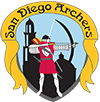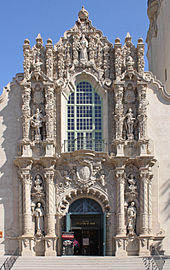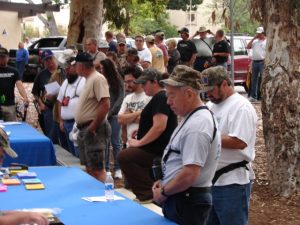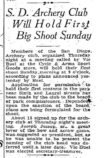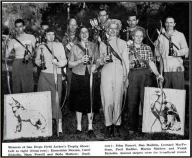A Visitors Story – Gordon Vail, an Honorary Lifetime Member of the San Diego Archers
A Visitors Story – Gordon Vail, an Honorary Lifetime Member of the San Diego Archers
Step into the lush forest, where your senses are awakened by the myriad of sights, sounds, and smells. You tread softly, careful not to betray your presence. Suddenly, a twig snaps in the distance. Your eyes dart to the source of the sound, and there it is – a deer. Your heart pounds in your chest as you reach for an arrow. This is the moment you’ve been preparing for. With a deep breath, you let the arrow fly.
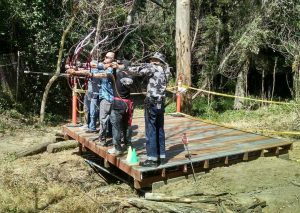 While the Rube Powell Archery Range in Balboa Park may not be as intense, it’s a splendid spot to spend a sunny day in San Diego. Nestled just off the Alcazar Garden parking lot, accessible via Highway 163 and the Cabrillo Bridge, this 28-acre archery paradise, along with its sister range, Morley Field, are managed by the San Diego Archers Club in San Diego, California.
While the Rube Powell Archery Range in Balboa Park may not be as intense, it’s a splendid spot to spend a sunny day in San Diego. Nestled just off the Alcazar Garden parking lot, accessible via Highway 163 and the Cabrillo Bridge, this 28-acre archery paradise, along with its sister range, Morley Field, are managed by the San Diego Archers Club in San Diego, California.
Before my first visit to Balboa, I had never held a bow, let alone seen someone shoot one. I was a novice, so I brought along a couple of friends who were familiar with the range.
As soon as you step into the range, you understand why it’s a favorite among archery enthusiasts. The first target shooting area offers a panoramic view of the range, enveloped in a forest of palms and eucalyptus trees. We dropped our $2 fee into a little red box and settled down to watch other archers perfect their form.
Then, a figure entered the range, capturing our attention instantly. He seemed to have stepped out of a different time, a character straight out of “Van Helsing.” This tall, slender man, clad in black leather boots, jeans, and a jacket, sported a long handlebar mustache that faded from brown to gray. Hidden behind gold-rimmed John Lennon sunglasses and a brown fedora adorned with a feather, he was a sight to behold. A black leather quiver hung over his shoulder, housing his homemade aluminum arrows and an old combat knife. In his right hand, a cigarette smoldered. This was Sir Gordon.
Gordon has been a fixture at the Rube Powell range for over half a century, with archery being a lifelong passion.
“I’ve got hillbilly beginnings,” Gordon shared. “I used to make broadheads from tin can lids and attach them to pieces of wood to make arrows.”
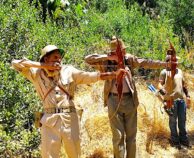 But Gordon’s humble beginnings have blossomed into something much grander. He’s a man who proudly places “Sir” before his name, a title earned by winning the annual King Arthur Tournament held at the Rube Powell range. He even hosts the Sir Gordon’s Traditional Shoot, where only traditional-style bows like longbows are permitted. Years of practice have honed his skills to the point where he can tell a good shot just by the feel of his release and the sound of the string on his bow. He likens this to typing without looking at the keys.
But Gordon’s humble beginnings have blossomed into something much grander. He’s a man who proudly places “Sir” before his name, a title earned by winning the annual King Arthur Tournament held at the Rube Powell range. He even hosts the Sir Gordon’s Traditional Shoot, where only traditional-style bows like longbows are permitted. Years of practice have honed his skills to the point where he can tell a good shot just by the feel of his release and the sound of the string on his bow. He likens this to typing without looking at the keys.
“It’s like when you’re typing without looking at the keys,” Gordon explained, “and you hit a wrong one, and you just know it by the feel.”
Gordon demonstrated his skill shortly after. He picked up his bow—a stunning, laminated blend of ebony, Indian rose, and ash woods crafted in 1964—and notched one of his silver arrows in the string. The sequence from pulling the arrow from the quiver to releasing the shot was a dance of rhythm and grace. His first two shots veered slightly to the left, but his third hit the target’s bulls-eye with a satisfying thud.
“There it is,” he declared confidently.
Gordon is a traditionalist in the world of archery. He favors recurve and longbows, the kind of equipment that evokes the image of a classic archer. He has given up using high-tech compound bows, even gifting his collection to his son.
“He brought up the will one day over the phone and I knew he was hinting at something,” Gordon recalled. “So, he says that he’s had his eye on one of my compound bows and I told him if he came and visited me, he could have them all.”
Gordon lives by two acronyms. The first is K.I.S.S.: “Keep it simple, stupid.” This explains his equipment choice. His overall style? He calls it the S.W.A.G. style. But don’t mistake it for the term you hear on campus.
“It stands for ‘scientific wild-ass guess’,” Gordon explained. “You have to know your equipment and what it can do, but the rest is getting your body to accommodate.”
Gordon has shot competitively and even hunted. But what keeps him hooked to archery is the mental challenge it presents.
“It’s a mental game with yourself,” Gordon said. “You’re the only one you’re trying to beat. Even when you’re shooting competitively—sure there’s another guy Read more...
